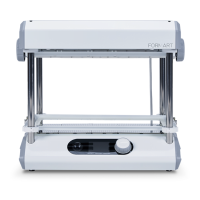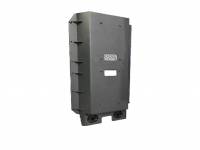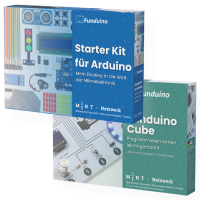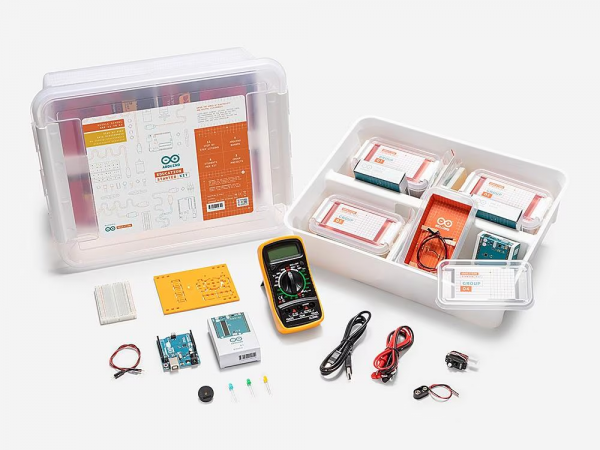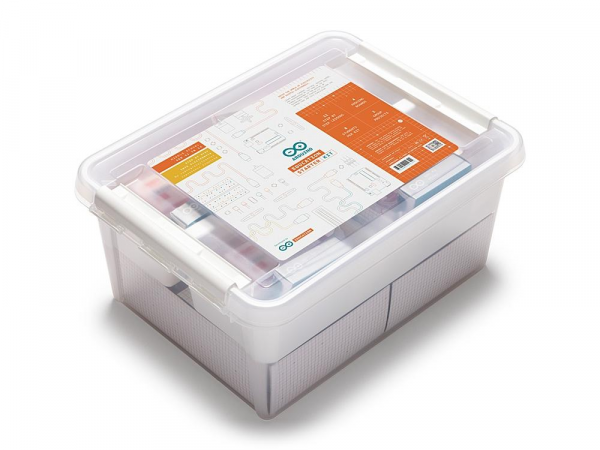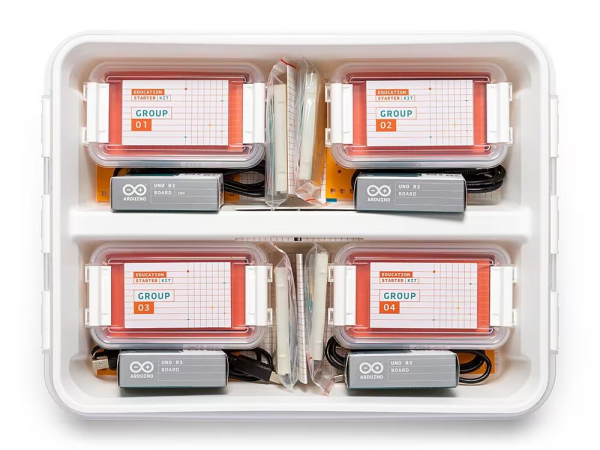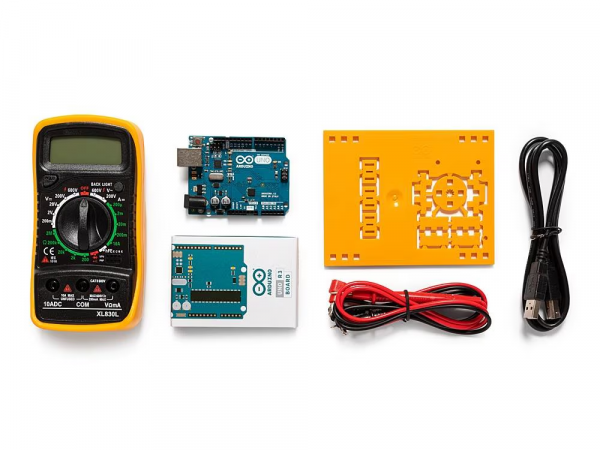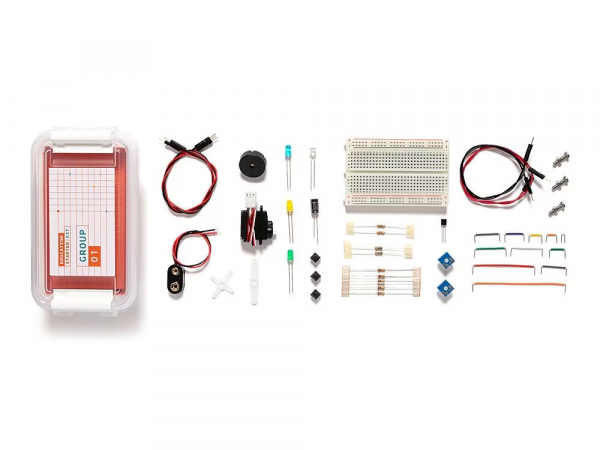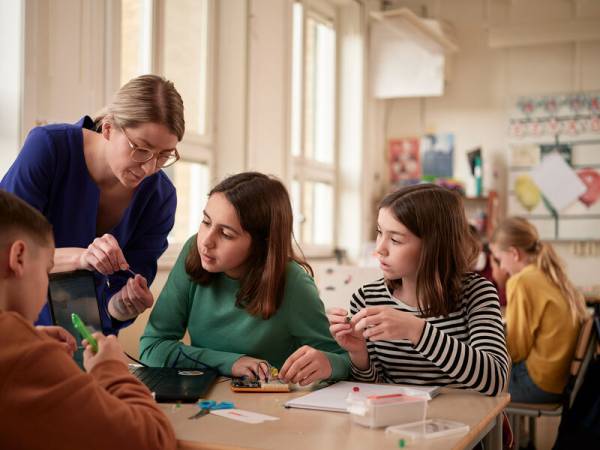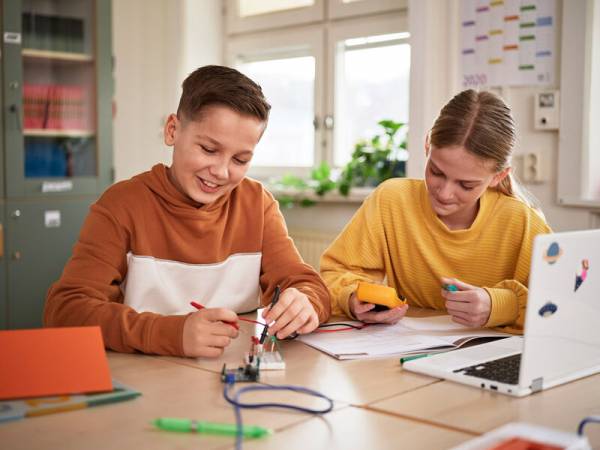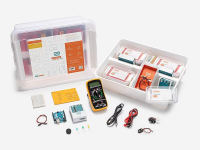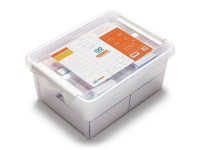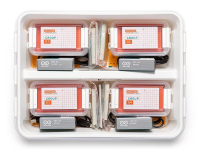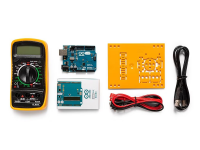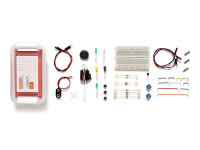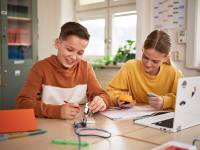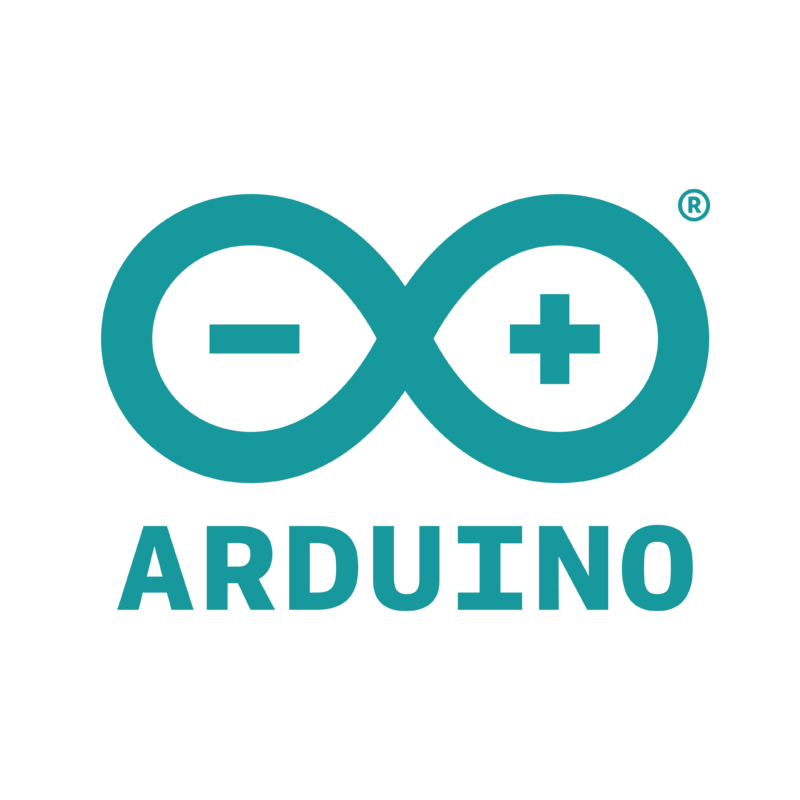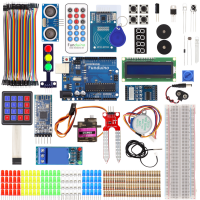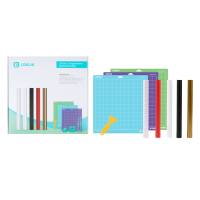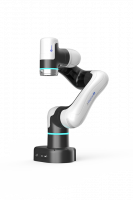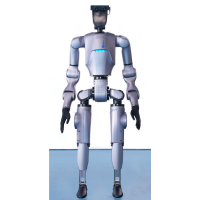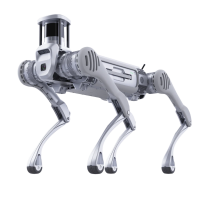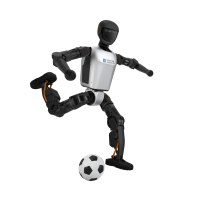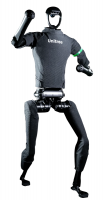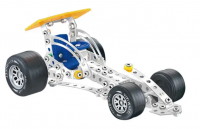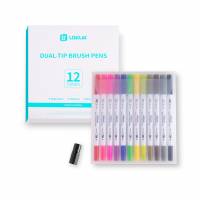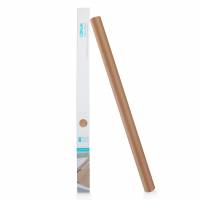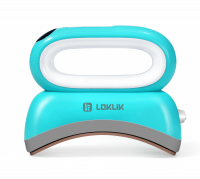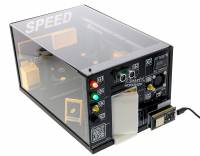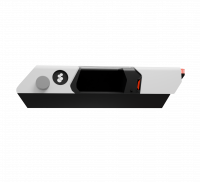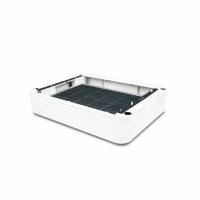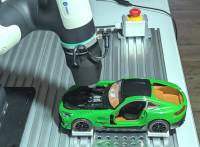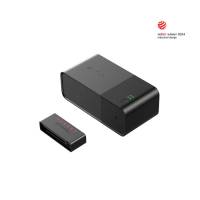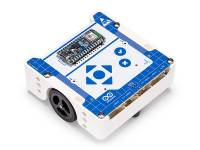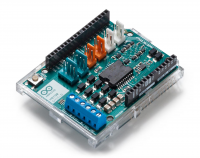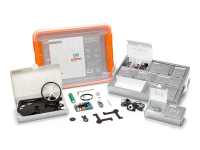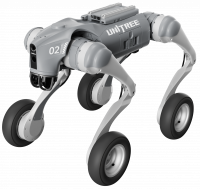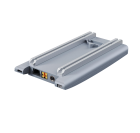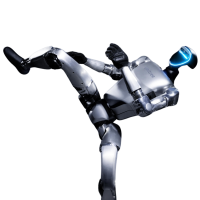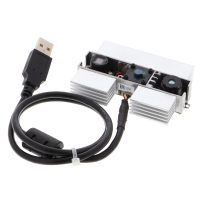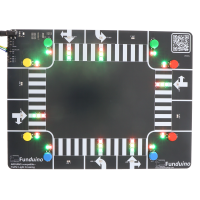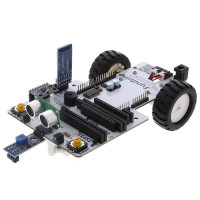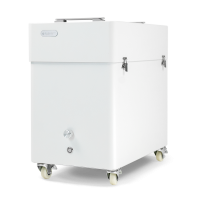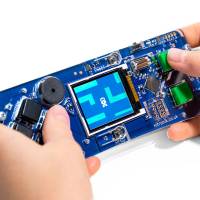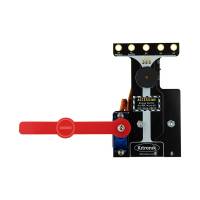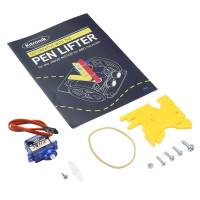Arduino Education Starter Kit
- Item no: F23110421
- Weight: 3,33 kg







Arduino Education Starter Kit
Teach middle school students the basics of programming, coding and electronics. No prior knowledge or experience is required as the kits take you step-by-step through each step, you are well supported by teacher guides and lessons can be designed to suit your students' abilities.
The Starter Kit can be integrated into the overall curriculum and offers the opportunity to gain confidence in programming and electronics through guided sessions and free experimentation. It also teaches important skills such as collaboration and problem solving.


The Arduino Education Starter Kitcontains all the hardware and software you need for eight students (in pairs). You get step-by-step lessons, teacher notes, exercises and for a full and comprehensive teaching experience there are additional optional resources including activities, concepts, history and interesting facts.
The online platform contains the lesson content, nine 90-minute lessons and two open-ended group projects. Each lesson builds on the previous one and gives students another opportunity to apply the skills and concepts they have already learned. Students will also receive a technical logbook to complete during the lessons.
At the beginning of each lesson you will be given an overview, expected duration and learning objectives. During each lesson you will find teacher notes and information to help the lesson run smoothly. At the end of each lesson you will find ideas for extension.
Key features:
- Complete Starter Kit: Ideal for getting started with electronics and programming with Arduino.
- Interactive learning content: Detailed instructions and teaching materials designed specifically for educational institutions.
- Versatile projects: Includes components for up to 15 exciting projects that promote understanding of circuits and codes.
- Includes Arduino Uno: With the popular Arduino Uno board at its heart, the kit enables the development of numerous creative projects.
- Promotes STEM skills: Helps students develop their skills in math, computer science, science and technology.
Documentation
Online platform
All courses are available online for both teachers and students and run in a linear fashion.Logbook
- The logbook is a downloadable PDF workbook that students must complete throughout the lesson.
- The teacher can print as many copies as needed for the lesson and the document can be completed individually or in groups.
- In addition, the teacher receives a downloadable logbook with the solutions.
Vocabulary
The lessons also contain words that may be unfamiliar to the students. There are numerous vocabulary exercises that teachers can carry out with their students.Learning lessons
- First steps (30 min.).in this lesson, students familiarize themselves with the kit material. They will learn about electrical safety, how to set up the software and create their first program.
- Lesson 1 - Electricity Basics (90 min.).in this lesson, students will learn some of the basic concepts of electricity and build their first simple circuit while learning about the components that make up the circuit.
- Lesson 2 - Ohm's Law (90 min.).students explore one of the laws of physics that determines how electricity behaves in a circuit: Ohm's Law. They learn the difference between parallel and series circuits through construction and investigate how electrical measurements behave using a multimeter as a tool.
- Lesson 3 - Traffic signals (90 min.).in this lesson, students will learn about the Arduino software (IDE) and program their first light circuit to control how the circuit works.
- Lesson 4 - Dimmer Switches (90 min.).students learn about potentiometers and how they can be used to manually control a circuit. As a result, they build an LED circuit where the Arduino board controls the brightness of the LEDs based on the position of the potentiometer. As students code their circuit, they will become familiar with concepts such as variables, conditional statements, and serial communication.
- Lesson 5 - Christmas Lights Project (90 min.).students will complete an open-ended project in which they design, build, and program their own Christmas lighting circuit. The project must meet the objectives, criteria and constraints of the project.
- Lesson 6 - Sports Robot (90 mins).in this lesson, students learn how to build a simple sports robot using a servo motor. They program the robot to hit, kick or throw a ball.
- Lesson 7 - Windshield wipers (90 min.).this lesson introduces students to new programming concepts such as nested conditions, switch-case structures, and loops. Students learn the new concepts by programming and building a windshield wiper circuit.
- Lesson 8 - Music Keyboard (90 mins).in this lesson, students will learn about piezo buzzers and how to create different sounds, tones and music. With this understanding, the student will build and program a musical keyboard.
- Lesson 9 - Lightwave Radar (90 mins).students will use their Arduino board and a phototransistor to measure light intensity and learn the basic principles of transmitting information through light waves.
- Lesson 10 - Greenhouse Control System Project (180 mins).students will complete an open-ended project to design, build, and program a climate control system for a greenhouse. The project must meet the objectives, criteria and constraints of the project.
Scope of delivery
The kit contains several parts and components that students will use to build circuits as they complete lessons and projects throughout the course. Here is a brief description of what is included in the kit:
Access code for exclusive online content, including teacher guides, step-by-step lessons, and additional materials such as resources, invention spotlights, and PDF logbooks for students and teachers.
- 4 Arduino UNO rev 3
- 4 Mounting base for Starter Kit Easy to mount plastic base
- 4 Battery holder 9 V
- 8 Batteries 9 V
- 4 breadboard 400 points
- 4 Capacitor - 100 uF
- 4 Jumper cable socket-plug (red)
- 4 Jumper cable socket-plug (black)
- 20 LEDs (red)
- 20 LEDs (green)
- 20 LEDs (yellow)
- 20 LEDs (blue)
- 4 multimeter
- 4 piezo buzzers [PKM17EPP-4001-B0]
- 4 phototransistors
- 8 potentiometers 10 kOhm
- 20 pushbuttons
- 4 resistors - 1 kOhm
- 20 resistors - 10 kOhm
- 20 resistors - 220 Ohm
- 20 resistors - 560 Ohm
- 70 Jumper cables
- 4 stranded jumper cables (red)
- 4 Servomotor
- 4 Temperature sensor [TMP36]
- 4 USB cable
- 12 M3 screws
- 12 M3 bolts
Introduction video
